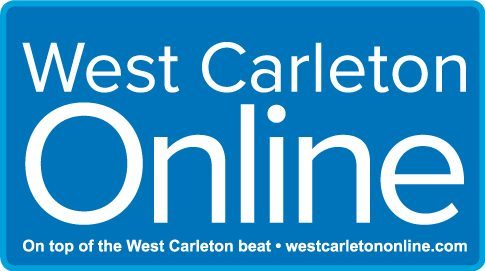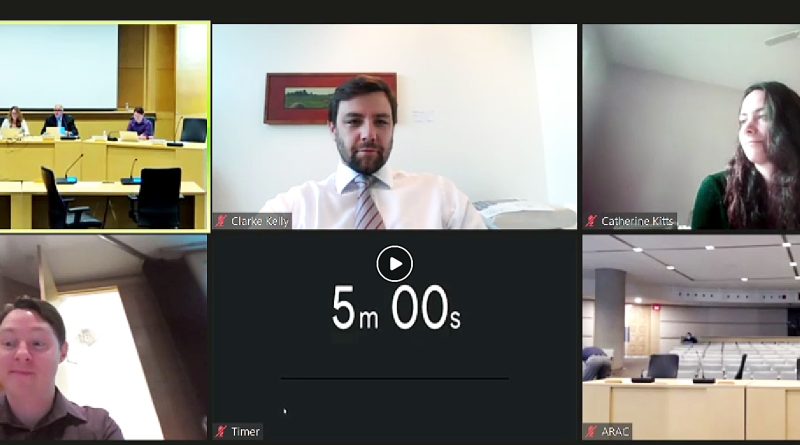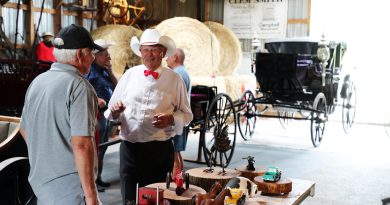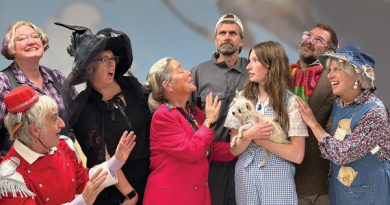Holmes, CRCBIA shine light on rural transit issues at ARAc
By Jake Davies - West Carleton Online
CITY HALL – Woodlawn’s Ken Holmes was on the docket for last Thursday’s (Sept. 7) Agriculture and Rural Affairs committee’s (ARAc) open mike session, this time updating the committee on the latest work of Rural Transit Solutions (RTS).
Last March RTS launch a survey looking for public input on a needs assessment of Ottawa’s public transportation system.
Open mic delegations are given five minutes to speak to ARAc on topics of their choosing. ARAc is the only City of Ottawa committee to have an open mic session.
Holmes briefly explained the RTS and its goals and used his time to focus on the latest developments including the analyzing of the March survey data.
“We started Survey #3 in March of this year to better define the transportation needs in terms of time of day, origin-destination, and age group,” Holmes told ARAc.
RTS received 356 responses in English and French. Participants were from all five rural wards, and RTS heard from residents of 25 villages.
“This morning, I will highlight the patterns of rural transportation, who would benefit from more transportation options, and what some impediments to improvements might be,” Holmes said. “It is worth noting the National Capital Region Origin-Destination Study does not survey our youth. The current situation with no school buses being available in some rural areas has increased the recognition there are so few transportation options for rural residents.”
Holmes says it has been challenging to engage rural high school students in the RTS’ work, but lack of transportation options for youth is not healthy.
“Lack of transportation for our youth and young adults can have a long-term impact on our rural population through a phenomenon that academics call ‘thinning out,’” Holmes said. “When youth find they have to move to the urban area for education or employment, that move is often permanent, and they don’t return to live in rural Ottawa. Not only do we lose talented individuals, but they are also a loss to their families, where they might have been able to assist their elderly parents age-in-place in their rural neighbourhood. Survey No. 3 shows that 60-65 per cent of rural residents either Agree or Strongly Agree that the rural area would benefit from more transportation. This level of support has been consistent in other surveys and public consultations.”
Following a brief breakdown of the statistics, Holmes said the data is clear.
“The data demonstrates a significant need for transportation throughout the day,” he said. “Because of the small and dispersed populations, this need would likely be best satisfied by an On-Demand shuttle bus system working on set schedules but with variable routes.”
RTS also believes there should be park and ride services in all the rural villages.
ARAc gave Holmes a bit more than five minutes for his presentation. Coun. David Brown relayed a question from Coun. Clarke Kelly. Kelly asked Holmes if he spoke to rural businesses about their need for employees to come out to them as opposed to employees who need a ride in to the city. Kelly highlighted the Carp Road Corridor Business Improvement Area (CRCBIA) in his question, Ottawa’s largest light industrial park.
Holmes said he has indeed spoke with CRCBIA executive director Roddy Bolivar over “the last three-plus years and they’ve been very vocal about the need to transport employees to their area.”
Bolivar spoke to West Carleton Online about the issue shortly after the ARAc meeting.
“I do not always attend but always view the video and see Carp Road Corridor interest in transit service came up today (Sept. 7),” Bolivar told West Carleton Online. “Thanks, Coun. Kelly for the question, Coun. Brown for asking it and Ken for a good response. Our city and our councillors are well aware that talent attraction – from high tech in Kanata north to Ottawa’s tourism sector to the skilled trades who ‘build’ Ottawa – is the most significant challenge facing business today. The corridor is Ottawa’s largest designated industrial employment area with close to 200 businesses and 3,000 employees. And with 50 per cent vacant already zoned land there is potential to grow the area to more than 400 businesses and 6,000 employees. With a lens on the relationship between employment attraction and economic development, we look to the city to recognize OC Transpo is one of the city’s most fundamental yet most important economic development tools.”
Bolivar says there is an easy solution too.
Recently, we provided a comment/input to the OC Transpo route review,” Bolivar said. “The focus of that input and request regarding route review was to recognize that empty deadhead busses travel on 417 to Carp Road in the employment area to find their way to start/end locations in south Stittsville. For instance, empty morning 262 busses coming off 417 go right by the Westbrook intersection entrance to Reed Park – home to companies like Oz Optics with more than 300 employees – on its way to the route start at Fernbank. A route adjustment to have those now empty out of service busses pass through the Centrum hub on their way to and from their deadhead would instantly create a link between the employment area and an OC Transpo hub. Thanks, Ken, for your continued work on the file.”












